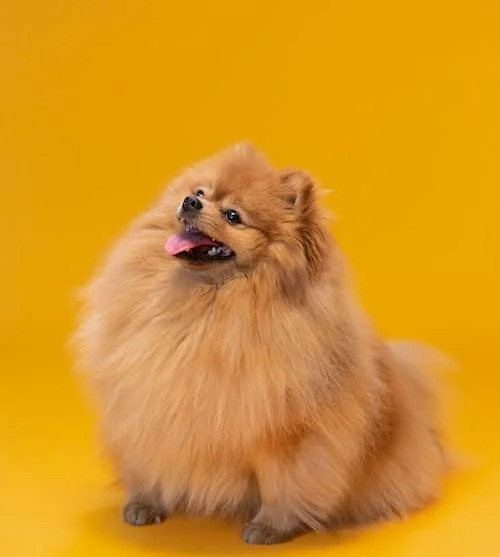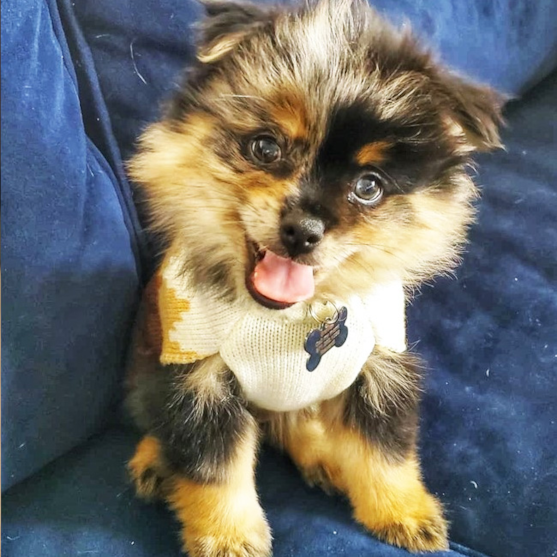Pomeranian Breed Information


One of the most adored dogs of our time, the Pomeranian is a superstar in the canine kingdom. With a Pom around, joy and love are a guarantee. These puppies adore their humans more than anything and it shows with every paw step. They are an easy-to-train breed that possesses high intelligence and eagerness to please.
Recognized as a toy breed by the AKC, the Pomeranian stands 8 to 11 inches tall and weighs at most 7 pounds during adulthood. This adorable pooch has pointed ears, a fox-like appearance, and gorgeous fluff that is impossible to resist.
Pomeranians are friendly dogs that like to glue themselves at the hip. They love games and cuddles and are big fans of being the center of attention.
Characteristics
- Also known as Pom Pom and Loulou De Pomeranie, the Pomeranian is one of the most popular purebred dog breeds in the world
- The Pomeranian breed is part of the American Kennel Club’s Toy Group
- Sweet and cuddly, these dogs are one of the best breeds for therapy work. They are often used as therapy dogs in hospitals
- Friendly and well-behaved around children, the Pomeranian puppy is an excellent companion pet for families
- Pomeranians have a double coat that sheds occasionally
- Pomeranian puppies make a fantastic addition to any family. They are amazing pets for seniors and sweet fur babies for single owners
- The grooming requirements of this breed are minimal
- Pom puppies train quickly with the right motivation. Positive reinforcement works wonders when training them
- Naturally friendly, the Poms get along with everyone including cats, dogs, and strangers

Appearance
One of the most beautiful toy dogs of our time, the Pomeranian is sure to impress you with its adorable wolf-like appearance. Pomeranians are true toy-sized dogs, weighing between 4 and 7 pounds, and standing 8 to 11 inches tall as adults. They are one of the smallest dog breeds in the American Kennel Club’s Toy Group.
What makes these dogs so incredibly adorable is not only their petite size but also their wolf-like features.
They have adorable pointy ears, a tiny, pointed muzzle, and a fluffy, feathered tail that they wear proudly curled over their backs. Their eyes are dark and almond-shaped, giving them a toy-like appearance.
The Pomeranian is one of the few breeds that comes in a myriad of colors, all recognized by the AKC breed standards. Among the breed’s most common colors are orange, white, black, red, cream, blue, brindle, brown, sable, wolf sable, and tan.
The Pomeranian coat is thick, providing insolation for both cold and hot weather. It is composed of a double layer of fur, one thicker layer, and one thinner layer. The double coat does shed occasionally, which means these adorable dogs may not be the best suited for allergy sufferers.
Photos
Temperament
Though they may look tiny and vulnerable, Pomeranians are quite the opposite. They are renowned for their feistiness and courage, being fearless in the face of any danger. The typical Pomeranian is a kind-hearted dog that loves everyone, but there are also exceptions to this rule. Spoiling can turn this beautiful lapdog into a little warrior that will not stand to have it any other way that his.
Friendliness is in their genes, especially for purebred Pomeranians that come from reputable breeders. They are bred to be sweet-tempered, loving companion pets that get along well with everyone in the family, including other pets like cats or dogs. Children are their favorite play friends, but their small size may be vulnerable to injury through rough play. Because of this, any play dates with toddlers or small, speedy children, should be supervised.
When it comes to their humans, Pomeranians are quite the love bugs. They adore being held, pampered, cuddled, and included in everything that goes on around them. They are not fans of being left alone but can be without their humans for a few hours without feeling separation anxiety.
Care
Grooming
The Pomeranian is a straight-haired, gorgeous dog breed that is known to shed occasionally, however, their small, toy size makes these dogs almost effortless to groom. Whether you opt to keep your Pomeranian with long hair or choose a shorter haircut like the teddy bear cut, brushing is essential a few times per week to ensure their hair doesn’t get knots, tangles, or mats. If you prefer your Pomeranian with short hair, monthly trimmings will be required since their hair grows quite fast.
Other parts of grooming your Pomeranian include brushing their teeth daily, clipping their nails regularly, and cleaning their ears. These steps are essential in keeping your Pomeranian happy and healthy.
Exercise Needs
Although small, the Pomeranian is quite an adventure lover. This breed is known for its energetic personality, so be prepared for some fun daily routines. They don’t have high energy levels that require you to walk them for miles each day, but they do have the spunk and energy for fun games and chases. The ideal routine for Pomeranian dogs includes one or two daily walks of 10 to 20 minutes and plenty of fun indoor activities.
Mental stimulation is also important for this breed. Be it with a game of hide-and-seek or a mentally stimulating puzzle game, make sure you exercise your Pom’s mind as well as their body.
Health
The Pomeranian is one of the healthiest toy breeds in the world of dogs, having very few common health problems. Although they can meet issues that are common among all small dogs, these are few and far between. Some of the things that your Pomeranian may encounter include dental issues, allergies, eye problems, and weight-related problems.
One of the most important aspects of caring for a Pomeranian is keeping up with regular veterinary visits. Check-ups are recommended every month or two to ensure that your Pom is a happy and healthy dog.
Because they are sometimes prone to obesity, it is recommended to keep Pomeranians on a diet routine and not leave food in their bowl all the time. Overfeeding and under-exercising can cause obesity in the breed.
Lifespan
Pomeranian dogs have an average lifespan of up to 16 years, with some even reaching as much as 20 to 21 years. They are a healthy breed that is renowned for their longevity. To ensure that your fur baby lives a long, happy, and healthy life, we recommend that you provide your pup with high-quality dog food, plenty of exercises, and most importantly, a loving environment for growth.
Training
Pomeranian puppies are a smart breed that can train quickly when properly motivated. Although they are not as stubborn as other breeds, they can be headstrong when it comes to training. To get the best results when training these puppies, it is recommended to identify what their favorite motivation is and use it as much as possible. Some Pomeranians prefer treats, while others are more passionate about squeaky toys. As a first step in training your Pomeranian puppy, try to find what they react most to.
Training should begin with basic commands that include potty training, sit, lay, and stay or wait. When practicing the basic commands, it’s best to use praise and positive reinforcement as reward methods. The key to training is daily practice. Make sure you and your puppy spend a few minutes each day practicing.
Socialization is typically the easiest part of training a Pomeranian, as these puppies are very friendly and sociable. This step should begin indoors where your puppy is comfortable and relaxed. You can begin by introducing one or two family members or friends at a time. After your puppy becomes comfortable with new interactions, you can introduce family pets like other dogs or cats. This step can also be done outdoors as soon as your puppy has all its vaccinations up to date.
History
The Pomeranian is one of the oldest breeds of dog in history, dating back over a thousand years. Ancient tapestries and sculptures date these dogs as far back as 400 BC.
The history of the Pomeranian is an interesting one, given their journey from large dogs to toy-sized lapdogs. As records attest, the Pomeranian we know and love today comes from a much larger ancestor that originated in the Arctic region. A dog of the Spitz type, the Pomeranian, who has had various names throughout history, was used in sled-pulling in the Arctic. Although the exact journey of the Spitz-type dog is unknown, many historians believe that the breed made its way from the Arctic to the region of Pomerania, a historical region that is now part of both Poland and Germany.
In Pomerania, the Spitz dogs were adored for their many skills as working dogs. They were used in hunting, herding, and even guarding. But the Pomeranian people saw more in these dogs than just their working capabilities and decided to further them closer to the Poms we know today.
The journey of the Pomeranians began to get richer as people took more interest in them. The breed journeyed through Europe and found the favor of royals and high society families. Most notably, Queen Victoria took a liking to them and began a breeding program that would diminish the Pomeranian size to half of what it was.
The breed has been known by many names including Lulu, Lou Lou De Pomeranie, Pom Pom, Spitz dog, and finally Pomeranian. The name Pomeranian is derived from the German word po-more which translates to by the sea.
Nowadays, the Pomeranians are among the most popular dogs in the world, being adored in every part of the globe. Thanks to their popularity, they are also one of the favorite breeds used in crossbreeding. They are the parents of various hybrid Pomeranian mixes such as the Pomsky, Pomachon, and Pomapoo.






